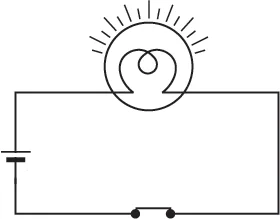![]() 16 Dec 2023
16 Dec 2023
Electric current is the flow of electric charge through a conductor. It is a fundamental concept in physics and a cornerstone of electrical engineering. Currents have diverse applications, from powering household appliances to driving complex electronic systems, making them essential in modern technology.
I = Qt

1A = 1C1s
Flow of charges inside a wire


V = W/Q
1 volt = 1 joule/ 1 coulomb
1 V = 1 J C–1
Conclusion
In conclusion, understanding electric current and circuits is like unraveling the magic behind everyday technologies. From the flow of charges to the glow of bulbs, these fundamental concepts play a crucial role in our modern world. Whether it’s the simplicity of a closed circuit or the troubleshooting of a fused bulb, the basics of electric current empower us to navigate and appreciate the wonders of electricity in our daily lives.
<div class="new-fform">
</div>